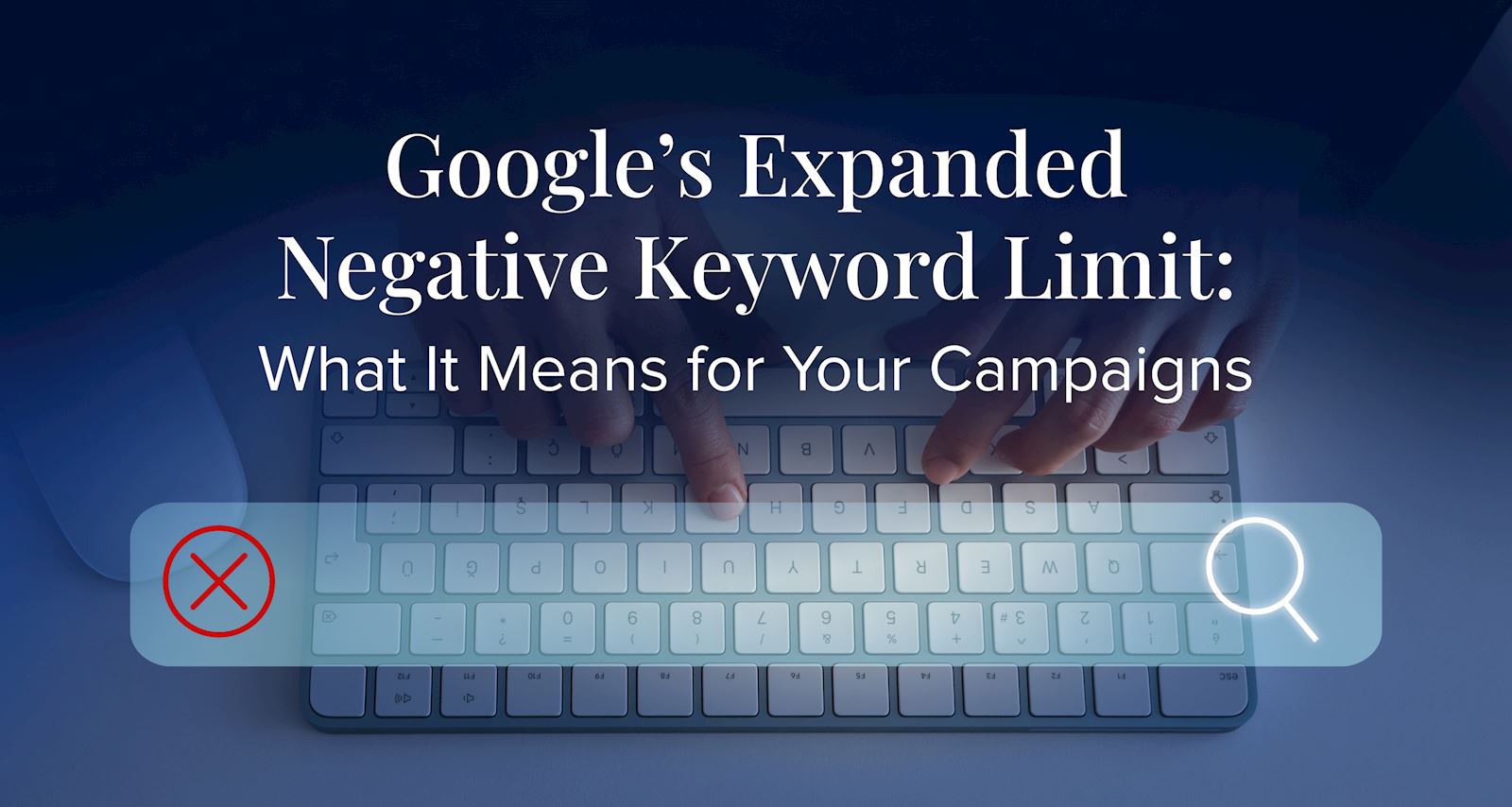How to Leverage Google Ads’ Expanded Negative Keyword Limit
Published by Spinutech on April 23, 2025

Google Ads has opened the door to negative keywords.
Ten thousand of them, to be exact.
Google's recent update to Performance Max (PMax) campaigns — allowing marketers to add up to 10,000 negative keywords — is a significant milestone in the evolution of paid media. Not only does it offer marketers unprecedented control over ad placements, but it also helps improve lead quality while maximizing the effectiveness of AI-driven automation.
This change offers an exciting opportunity to refine targeting and ensure better results.
What is Google Ads’ New Negative Keyword Limit?
Previously, Google Ads PMax campaigns operated somewhat as a "black box," with limited visibility into which keywords were triggering ads and few options for filtering out irrelevant traffic. While marketers could add negative keywords at the account level, they had no control over specific campaigns, and there was no way to block certain unwanted terms, such as irrelevant low-quality traffic or unqualified leads.
Now, with the expanded 10,000-keyword limit, businesses can directly influence their campaigns by filtering out irrelevant searches, leading to a more refined, efficient strategy.
Why Is This Change Important?
The expanded negative keyword limit allows marketers to avoid wasting budget on keywords that drive low-value or irrelevant traffic, which has historically been a significant concern for PMax campaigns. This change ensures that the focus remains on targeting high-quality, high-conversion leads, which in turn can increase return on ad spend (ROAS) and reduce the risk of overpaying for clicks that are unlikely to convert.
This granular level of control enables marketers to drive more specific and actionable traffic to their landing pages, enhancing the chances of conversion and reducing wasted spend.
Best Practices for Leveraging Negative Keywords in PMax Campaigns
While the expansion of the negative keyword limit provides great flexibility, it’s important to use it strategically. Here are a few best practices to keep in mind:
Targeting Non-Brand Keywords
Remove brand terms from your PMax campaigns. Historically, PMax campaigns would target branded searches and potentially generate leads from current customers. With the ability to add negative brand keywords, businesses can shift focus to prospecting new customers, ensuring their efforts are not spent on individuals already familiar with the brand.
Keyword Grouping & Segmentation
Get more granular. For example, if you're a pest control service, you can focus solely on specific pests, like ticks, by negating all irrelevant mosquito or lawn-related search terms. This kind of fine-tuning allows for more targeted campaigns that reflect the nuances of your offerings.
Testing & Iteration
With the expanded keyword list, it's important to test different negative keyword groupings and review campaign performance regularly. By experimenting with various combinations of terms, you can continuously optimize for the best-performing segments.
3 Tips for Optimizing Your Performance Max Campaigns
While negative keywords are a significant step forward, they are only one part of the optimization process. Here are three additional tips for enhancing campaign performance:
1. Review Placements Regularly
PMax campaigns allow marketers to refine where their ads show up. Make sure you’re continually reviewing placements and negating any that do not align with your campaign goals. This includes blocking irrelevant mobile apps or questionable content through the content suitability tool.
2. Utilize Search Term Reports
Once the ability to see search terms is available, it’s essential to leverage this data to identify underperforming keywords. By analyzing your search terms report, you can refine your campaign targeting and remove ineffective keywords from your campaigns. This will improve the relevance of your ads and reduce unnecessary spending.
3. Be Cautious of Over-Optimizing
While the 10,000 negative keyword limit is a powerful tool, it comes with the caveat that marketers must avoid over-optimizing. Setting too many negative keywords can unintentionally block relevant traffic or reduce the reach of your campaigns. It's essential to use the expanded limit judiciously and continue to monitor the overall performance of your campaigns to ensure that the positive impact on your ROAS outweighs any potential downsides.
Negative Keyword Expansion is an Opportunity to Improve Campaign Performance
With the ability to add up to 10,000 negative keywords to Google Ads' PMax campaigns, marketers can now more effectively refine their campaigns, focus on high-quality leads, and reduce the risk of wasted ad spend. By using this feature strategically, businesses can optimize their campaigns for improved lead generation and higher return on investment. As always, the key is balancing flexibility with control to ensure you’re achieving the best possible results.
Let’s chat about how we can use negative keywords to refine your campaigns.